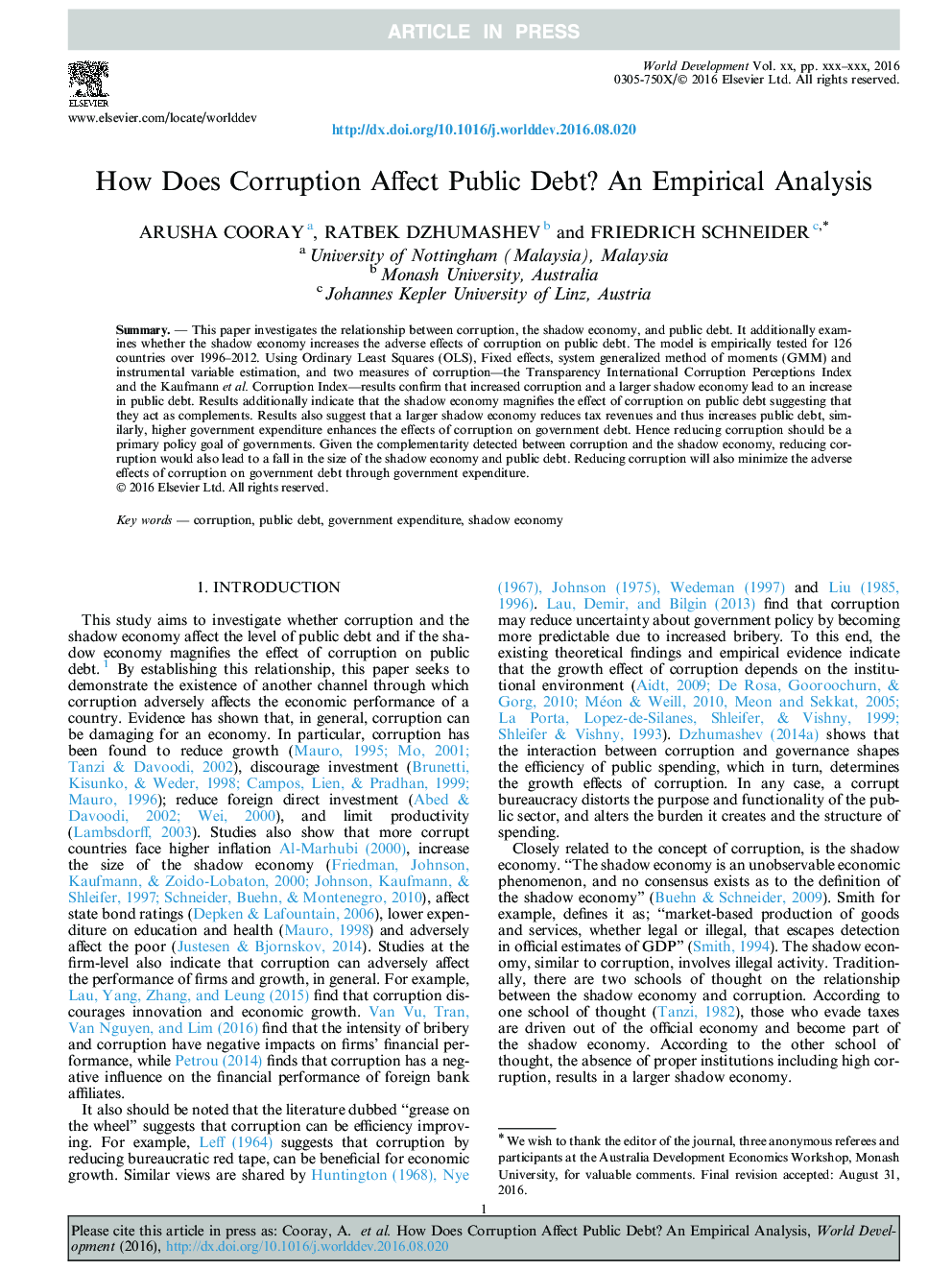| Article ID | Journal | Published Year | Pages | File Type |
|---|---|---|---|---|
| 5105244 | World Development | 2017 | 13 Pages |
Abstract
This paper investigates the relationship between corruption, the shadow economy, and public debt. It additionally examines whether the shadow economy increases the adverse effects of corruption on public debt. The model is empirically tested for 126 countries over 1996-2012. Using Ordinary Least Squares (OLS), Fixed effects, system generalized method of moments (GMM) and instrumental variable estimation, and two measures of corruption-the Transparency International Corruption Perceptions Index and the Kaufmann et al. Corruption Index-results confirm that increased corruption and a larger shadow economy lead to an increase in public debt. Results additionally indicate that the shadow economy magnifies the effect of corruption on public debt suggesting that they act as complements. Results also suggest that a larger shadow economy reduces tax revenues and thus increases public debt, similarly, higher government expenditure enhances the effects of corruption on government debt. Hence reducing corruption should be a primary policy goal of governments. Given the complementarity detected between corruption and the shadow economy, reducing corruption would also lead to a fall in the size of the shadow economy and public debt. Reducing corruption will also minimize the adverse effects of corruption on government debt through government expenditure.
Related Topics
Social Sciences and Humanities
Economics, Econometrics and Finance
Economics and Econometrics
Authors
Arusha Cooray, Ratbek Dzhumashev, Friedrich Schneider,
